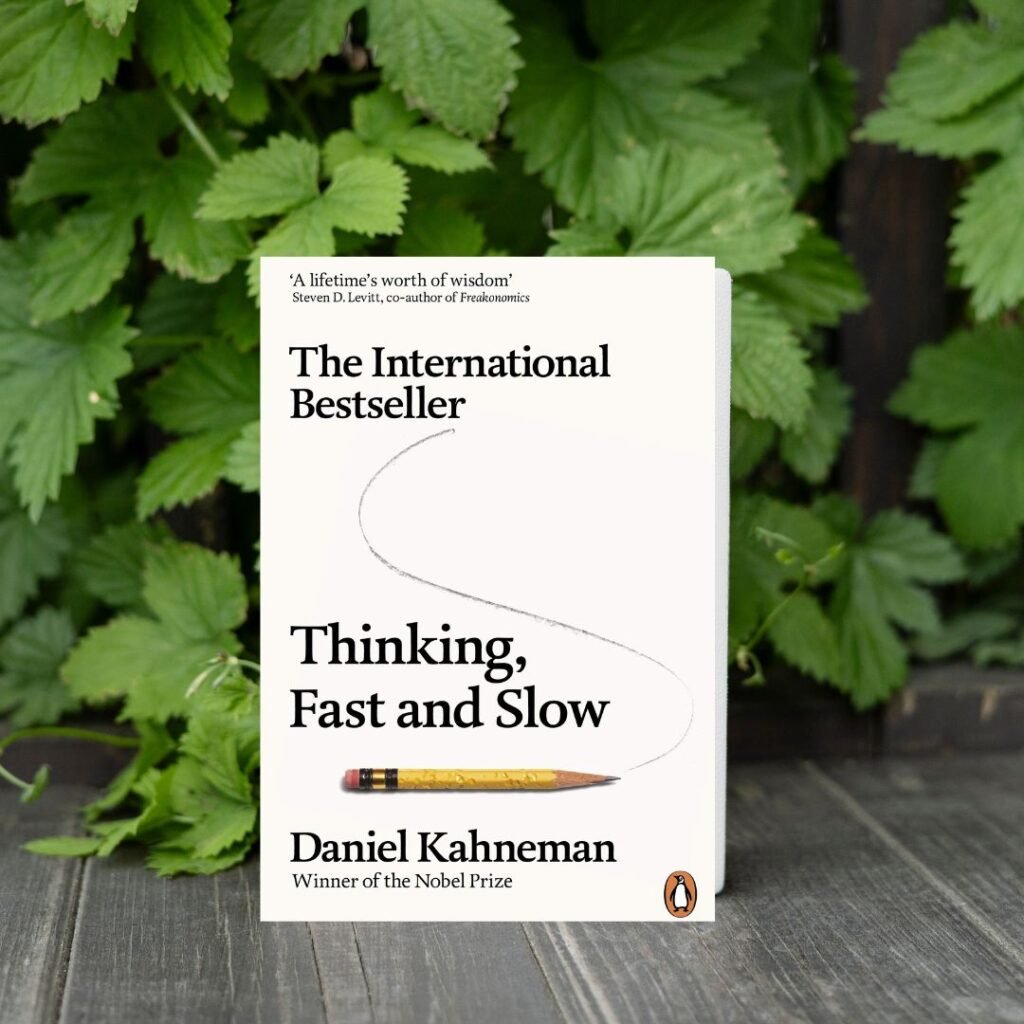“Thinking Fast and Slow” is a bestselling book by Nobel Prize-winning economist Daniel Kahneman that explores the ways in which we make decisions and think about the world around us. The book is based on decades of research in the field of behavioral economics and draws on a wide range of examples to illustrate the ways in which our thinking is influenced by cognitive biases and other factors.
Brief of Thinking Fast and Slow
One of the key themes of the book Thinking Fast and Slow is the distinction between two systems of thinking: System 1 and System 2. System 1 is fast, automatic, and intuitive, while System 2 is slower, more deliberate, and more logical. Kahneman argues that our brains are constantly switching between these two systems, and that this can lead to a number of cognitive biases and errors in decision-making.
The author also explores the concept of heuristics, which are mental shortcuts that our brains use to make decisions quickly and efficiently. He explains that these shortcuts can be helpful in some situations, but can also lead to errors in judgment and decision-making.
Another important theme in the book Thinking Fast and Slow is the idea that our emotions and feelings can have a powerful influence on our thinking and decision-making. The author provides examples of how our emotions and feelings can lead us to make irrational decisions and how to overcome them.
The book is written in an engaging and accessible style, making it easy for readers to understand the complex concepts and ideas presented. It is a great read for anyone interested in understanding the ways in which our minds work and how we make decisions.
Overall, “Thinking Fast and Slow” is a groundbreaking and thought-provoking book that provides a detailed and fascinating look at the ways in which we think and make decisions. The author’s research and insights are based on decades of research in the field of behavioral economics and cognitive psychology. The book provides valuable insights and strategies for overcoming cognitive biases and making better decisions. It’s a must-read for anyone interested in understanding the human mind and how it works.
10 Lessons from Thinking Fast and Slow
- The human mind has two systems of thinking: System 1, which is fast, automatic, and intuitive, and System 2, which is slower, more deliberate, and more logical.
- Our brains are constantly switching between these two systems, and this can lead to cognitive biases and errors in decision-making.
- Heuristics, or mental shortcuts, can be helpful in some situations but can also lead to errors in judgment and decision-making.
- Emotions and feelings can have a powerful influence on our thinking and decision-making.
- Cognitive biases, such as the confirmation bias and the sunk cost fallacy, can lead to irrational decisions.
- Overcoming cognitive biases and errors in decision-making requires awareness and a willingness to question our own thinking.
- The availability heuristic, or the tendency to overestimate the likelihood of events based on how easily they come to mind, can lead to errors in judgment.
- Anchoring, or the tendency to rely too heavily on the first piece of information encountered when making decisions, can lead to errors in judgment.
- The framing effect, or the way in which the way a problem is presented can influence the decision made, can lead to errors in judgment.
- The affect heuristic, or the tendency to base decisions on emotions rather than facts, can lead to errors in judgment.
The book provides valuable insights and strategies for overcoming cognitive biases and making better decisions. It’s a must-read for anyone interested in understanding the human mind and how it works. The book is written in an engaging and accessible style, making it easy for readers to understand the complex concepts and ideas presented. It is a great read for anyone interested in understanding the ways in which our minds work and how we make decisions.
About the Author
The book’s author, Daniel Kahneman, is a renowned behavioral economist, psychologist and author. He was born in Tel Aviv, Israel in 1934 and later moved to France where he received his PhD in psychology from the Sorbonne. He is best known for his work on the psychology of judgment and decision-making, which earned him the Nobel Memorial Prize in Economic Sciences in 2002.
Kahneman is a professor emeritus of psychology and public affairs at Princeton University, where he spent many years conducting research in the field of cognitive psychology and behavioral economics. He has written several books and articles on the subject of judgment and decision-making, including “Thinking, Fast and Slow” and “Maps of Bounded Rationality: A Perspective on Intuitive Judgment and Choice.” He continues to be a leading voice in the field of behavioral economics and his work has greatly contributed to the understanding of how people make decisions and think about the world around them.
Follow Reviewzade on Instagram for regular updates. Check here for more book reviews.

Keywords: Thinking Fast and Slow, Thinking Fast and Slow by Daniel Kahneman




